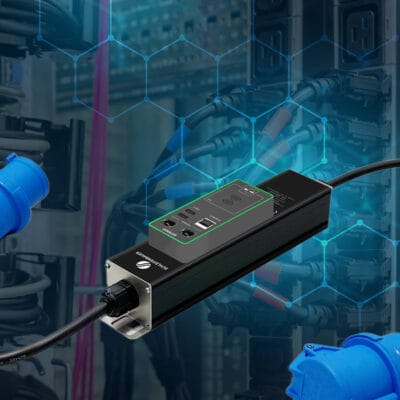A Deep Dive into Inline Power Meters
 In the ever-evolving landscape of Data Centre management, efficient and reliable power distribution becomes crucial. Inline meters revolutionise this space by enhancing power monitoring and management in Data Centres. These devices integrate seamlessly into existing power distribution infrastructure, providing vital insights that empower Data Centre operators to optimise energy use.
In the ever-evolving landscape of Data Centre management, efficient and reliable power distribution becomes crucial. Inline meters revolutionise this space by enhancing power monitoring and management in Data Centres. These devices integrate seamlessly into existing power distribution infrastructure, providing vital insights that empower Data Centre operators to optimise energy use.
Inline meters elevate monitoring sophistication beyond traditional basic power distribution units (PDUs), revealing the latter’s limitations in performance tracking. By capturing key power metrics and promoting more active power management, inline meters actively enhance overall efficiency and ensure that Data Centres operate at peak performance.
In this guide, we will look at inline meters. We will understand their role in Data Centre power management. We will also discover the many benefits they provide, such as better monitoring and improved energy efficiency.
We will talk about how they solve the problems of unmonitored basic PDUs. They will also give operators advanced power monitoring tools. These tools help with proactive power management and better efficiency.
We will cover:
Inline power meters are devices that integrate into existing power distribution infrastructure, providing precise power monitoring. They function as vigilant sentinels, constantly measuring and reporting on the electrical characteristics of the circuits they connect to. This real-time, granular data is crucial for understanding power consumption patterns, identifying inefficiencies, and optimising energy usage within the Data Centre. Think of them as smart electrical inspectors. You can install them in-line with your current basic PDU setup.
Unlike intelligent PDUs that have built-in monitoring capabilities, inline meters integrate with basic PDUs, enabling smart power monitoring capabilities without requiring a complete PDU replacement. This makes them an ideal solution for Data Centres looking to upgrade their monitoring capabilities in a cost-effective and non-disruptive manner. Upgrading to intelligent PDUs can be a significant capital expenditure, often requiring extensive planning and downtime. Inline meters offer a more agile and less disruptive approach, allowing Data Centres to leverage their existing infrastructure while gaining valuable insights into power usage. Data Centres typically install these meters directly in the power pathway, either between the power supply and the Power Distribution Unit (PDU) or, for a more granular approach, between a PDU outlet and the IT equipment it feeds.
Designed to be compact and easy to install to minimise downtime and disruption during deployment, inline meters collect valuable data, including voltage, current, power factor, and energy consumption. The central management system then receives this data, providing Data Centre operators with a comprehensive view of their power consumption. This centralised view facilitates informed decision-making regarding capacity planning, resource allocation, and overall energy efficiency. Furthermore, analysing the historical data collected by inline meters helps identify trends and predict future power needs, assisting in proactively preventing outages and optimising power utilisation.
Inline power meters offer a multitude of benefits for Data Centres, empowering them to operate more efficiently, reliably, and sustainably. These benefits enhance power monitoring, actively manage power usage, optimise resource utilisation, and significantly reduce costs.
Let us explore these key advantages in more detail:
- Enhanced Power Monitoring: Data Centre operators gain enhanced power monitoring with inline meters, which provide granular visibility into power consumption at the point of use, whether at the individual device, server, or rack level. This precise metering allows operators to identify “power hogs,” track energy usage trends over time, and establish baseline power profiles for different workloads. Such detailed information is crucial for making informed decisions about capacity planning, resource allocation, and overall energy strategy. Moreover, this granularity supports accurate chargeback models, promoting greater accountability and conservation.
- Improved Efficiency: Inline meters help Data Centres optimise Power Usage Effectiveness (PUE) by identifying inefficiencies and significantly reducing wasted energy. With detailed, real-time power consumption data, operators can fine-tune cooling systems to match actual heat loads, prevent overcooling, and minimise wasted cooling. They can identify and consolidate underutilised servers, eliminating unnecessary energy expenditure.
Inline meters can find and remove “phantom loads.” These loads come from idle equipment or inefficient power supplies. This helps save energy and lower operational costs. This data-driven method helps save on energy bills. It also reduces the carbon footprint and supports sustainability goals. - Active Power Management & Increased Uptime: Operators gain from real-time power monitoring. This helps them manage power better.
They can move from fixing problems after they happen to preventing them before they occur. By setting up inline meters to send alerts when power use goes over set limits, operators can find problems. These problems may include failing hardware, overloaded circuits, or unauthorised devices.
This early warning system enables corrective action before issues escalate, preventing disruptive overloads, avoiding costly downtime, and ensuring the stability and resilience of Data Centre infrastructure. Finding problems and faults in real-time helps keep systems running smoothly. This reduces the chance of data loss or service interruptions. - Capacity Planning & Optimisation for Future Growth: Inline meters provide invaluable detailed, historical data for accurate and effective capacity planning. Data Centre operators can predict future power needs by understanding the exact power requirements of IT equipment. They consider different load conditions and business demands. They make smart choices about improving infrastructure. This includes expanding Power Distribution Units (PDUs) and investing in better cooling technologies. Additionally, inline metering enables operators to optimise rack density, safely maximising the utilisation of available space and power resources without risking overloads or system instability. This optimised resource allocation supports scalability and accommodates future growth cost-effectively.
- Cost Savings & Return on Investment (ROI): Energy efficiency improvements and better power management reduce downtime. Optimised capacity planning with inline power meters leads to significant and measurable cost savings over time. By reducing overall energy consumption, minimising downtime events, and extending IT equipment’s operational lifespan through initiative-taking maintenance, these meters offer a compelling Return on Investment (ROI). Inline power meters deliver a strong ROI by decreasing energy consumption, minimising downtime, and lengthening the operational life of IT equipment via preventive maintenance.
The detailed data given allows for focused investments in energy-saving technologies and practices. This ensures resources are used where they can best reduce costs and improve performance. Furthermore, accurate chargeback models based on measured consumption incentivise conservation and promote more responsible energy usage throughout the organisation.
For many Data Centres, Basic Power Distribution Units (PDUs) serve as the foundation, offering a cost-effective and reliable way to distribute power. However, their design often misses the advanced monitoring capabilities that intelligent PDUs provide. This oversight forces Data Centre operators to work without crucial insights, hindering their ability to proactively identify potential issues and optimise power usage. As a result, operators face inefficiencies, a heightened risk of downtime, and challenges in managing growing power demands.
Limitations of Unmonitored Basic PDUs
- Lack of Visibility into Power Consumption: Without integrated power monitoring, operators find it exceedingly difficult to understand the energy use of individual devices and racks. This lack of data challenges the identification of power-intensive servers, tracking of energy usage trends over time, and informed decisions about capacity planning. Operators struggle with critical questions such as, “Which servers consume the most power?” or “Are we nearing our power capacity limits?” This absence of insight hampers efforts to identify and address inefficiencies.
- Reactive Problem Solving and Increased Downtime Risk: Basic PDUs cannot offer real-time alerts and notifications when power issues arise, forcing operators into reactive mode, tackling problems only after they have manifested. For instance, if an overloaded circuit breaker trips unexpectedly, it can cause server outages, data loss, and expensive repairs. This reactive approach starkly contrasts with the proactive capabilities of intelligent PDUs, which alert operators to potential problems before they escalate, preventing critical failures and avoiding significant financial losses and reputation damage.
- Inefficient Resource Allocation and Wasted Energy: Without granular data from power monitoring, optimising resource allocation becomes speculative. Operators might remain unaware of underutilised power capacity on certain circuits while others near their limits. This leads to inefficient power use, resulting in wasted energy and increased operating costs. Furthermore, it hinders the ability to right-size power infrastructure, causing unnecessary investments in additional capacity when existing resources could suffice.
How Inline Meters Address These Limitations
Inline meters present a compelling solution by bridging the gap between basic and intelligent PDUs. These devices seamlessly introduce smart power monitoring capabilities into existing infrastructures without requiring a full overhaul. Simply attaching them to your current basic PDU setup delivers critical visibility, real-time alerts, and data analytics needed to optimise power usage, prevent downtime proactively, and significantly enhance overall Data Centre efficiency.
This approach offers several key advantages:
- Cost-Effective Upgrade: Inline meters allow Data Centre operators to leverage their existing investments in basic PDUs while accessing advanced power monitoring at a fraction of the cost of replacing entire PDU systems.
- Enhanced Power Visibility: Equipped with comprehensive power consumption data encompassing voltage, current, power factor, and kilowatt-hours (kWh), accessible via intuitive interfaces, operators can leverage data-driven insights for effective decision-making.
- Proactively Prevent Problems: Real-time alerts and notifications can be set to trigger when power consumption exceeds pre-defined thresholds, enabling operators to address potential problems before they escalate into critical failures.
- Improved Capacity Planning: Accurate power consumption data aids operators in optimising capacity planning, ensuring adequate power resources are available while avoiding over-provisioning.
- Increased Energy Efficiency: By identifying power-hungry devices and optimising power distribution, inline meters help reduce energy consumption and lower operating costs, contributing to a more sustainable Data Centre.
While basic PDUs offer a fundamental power distribution solution, their lack of monitoring capabilities poses significant challenges for Data Centre operators. Inline meters offer a simple, cost-effective, and impactful upgrade path, enabling operators to unlock the power of data, optimise power usage, and enhance the overall efficiency and reliability of their Data Centres. By adding intelligence to existing infrastructure, inline meters empower Data Centres to operate smarter, not harder.
In modern Data Centres, operators use inline power meters as indispensable tools to gain deep insights into the electrical characteristics of the circuits they monitor. By providing invaluable data, these meters help operators comprehend power usage, pinpoint potential issues, and optimise Data Centre performance. By continuously measuring and reporting on key metrics, these meters enable Data Centre operators to make informed decisions about power management, resource allocation, and infrastructure reliability.
Here is a more detailed look at the crucial power metrics tracked by these devices:
- Voltage (V): Inline power meters measure the electrical potential difference between two points within a circuit. Operators maintain voltage within acceptable ranges to ensure the proper functioning of IT equipment. By monitoring voltage levels, they ensure equipment receives the correct input, preventing damage and performance degradation. Furthermore, they use voltage fluctuations to identify underlying power quality issues proactively, resolving problems before they escalate into downtime.
- Current (A): Operators monitor the flow of electrical charge through a circuit by measuring current levels. This practice helps detect potential overloads, preventing tripped breakers and service interruptions. By observing current draw, operators optimise circuit loading, preventing overloading of circuits, while maximising the utilisation of available capacity. This data is vital for preventing downtime and extending the lifespan of electrical components.
- Power (kW): Operators monitor the rate of electrical energy consumption to analyse energy usage patterns in the Data Centre. By monitoring power consumption at a granular level, they identify power-hungry devices or areas, allowing corrective actions such as optimising cooling, consolidating workloads, or upgrading inefficient equipment. Power data is also essential for accurately calculating Power Usage Effectiveness (PUE), a key indicator of Data Centre energy efficiency.
- Energy (kWh): Inline power meters help operators track energy consumption over specific periods to directly tie it to energy costs, identifying opportunities for energy savings. Analysing energy consumption trends reveals inefficient processes or equipment that contribute to higher energy bills. This data also supports sustainability initiatives, offering accurate and auditable metrics for reporting on energy consumption and carbon footprint reduction efforts.
- Power Factor (PF): Operators monitor power factor, which indicates the efficiency of electrical power usage, to detect and resolve power quality problems through power factor correction methods. A power factor closest to one indicates high efficiency, while a low power factor suggests significant electrical power wastage. Improving power factor not only reduces energy waste but also lowers utility bills and extends the capacity of the existing power infrastructure.
- Frequency (Hz): Operators monitor the rate at which the alternating current (AC) power supply cycles to ensure stability. By maintaining a stable frequency, they ensure the proper operation of sensitive IT equipment. Deviations from the standard frequency indicate problems with the power grid or on-site generators, prompting immediate investigation and corrective action.
By diligently tracking these key power metrics, operators use inline power meters to gain actionable insights, manage power effectively, optimise resource allocation, and safeguard the reliable operation of their critical infrastructure. Identifying inefficiencies, preventing overloads, and ensuring power quality contribute to significant cost savings, improved uptime, and enhanced sustainability.
Conclusion
In conclusion, inline meters transform Data Centre power management by seamlessly integrating into existing power distribution infrastructure, providing unparalleled monitoring and control. Our exploration showed how these meters enhance power monitoring capabilities, significantly improve overall efficiency, and enable more active power management strategies.
By highlighting the limitations of unmonitored basic PDUs, we illustrated the critical role inline meters play in addressing potential pitfalls and optimising power utilisation. Data Centre operators can use key power metrics to make smart decisions. This helps improve performance and lower costs. Using inline meters means not just keeping up with technology. It also means leading the way to a better and stronger future in power management. To elevate your Data Centre operations, take a step in the right direction by integrating inline meters.
Thank you for joining us on this journey through the world of inline meters; we invite you to explore further and harness the benefits these innovative solutions can offer.



